
Evolution of the Village
A limited number of historical maps exist and it proved impossible to trace the shape of the village back to Anglo -Saxon times. The maps however give some sense of how the village has evolved. Most noticeable is that, despite the joining of Elston and East Stoke parishes in 1872, the village still consisted of a two separate strings of houses along Top Street and Low Street for the next seventy years, and no substantive building took place along Toad Lane or Pinfold Lane until the end of the Second World War.
1260s
All Saints Church built
1479
South aisle of the church extended by nine feet
1485-1603
Tudor house in Mill Road ("Blue Bell Inn") built
1577
Old Chapel built
16th Century
Tudor dovecote behind The Old Ale House in Top Street built
Early 17th Century
Ardmore House , referred to as the oldest dwelling in the village, built
17th Century
Church tower rebuilt
1650s
Holly Byre (barn) built
1653
First school built, possibly where Sharah House in Elston Lane now stands
1710
Tudor Farm House in Low Street built
1720
Berkley Cottage in Low Street built
1724
Elm Cottage in Low Street built
1729
Ivy House in Low Street built
1744
Ann Darwin Cottages built
1756
Elston Hall built
1780
The Hollies built in Low Street
1784
Dove Cottage in Low Street built by this time
.jpg)
1799
Cobbler's Cottage and Kirklevington built on the corner of Top Street and Mill Road
Late 18th Century
Brick cladding added to Ardmore House
The Old Alehouse, formerly King William IV public house, built in Top Street
Hall Farm house built, later known as Merrin's Farm house, off Top Street
Lodge House in Lodge Lane by the Fosse Way built
Early 19th Century
Extensions to Elston Hall
1812
New school house built where Sharah house now stands in Elston Lane
1815
Rose Cottage inMill Road built
1815
First Wesleyan Chapel built where Holydene now stands
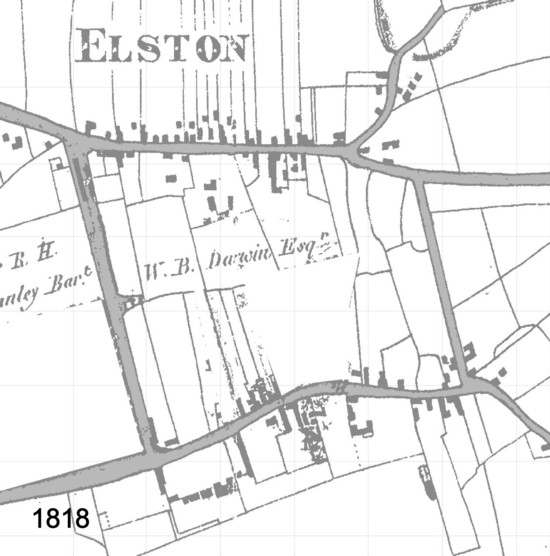 1830
1830
1830
Baileys, Willow, Cob, and Rhizome Cottages built in Low Street
1834
Ann Darwin Cottages rebuilt
1837
Garden front added to Elston Hall
1937/8
Church tower rebuilt again to accommodate the clock
1840/1845
Independent Primitive Methodist Chapel in Low Street, now The Whte House, built
1844
Windmill in Mill Road built 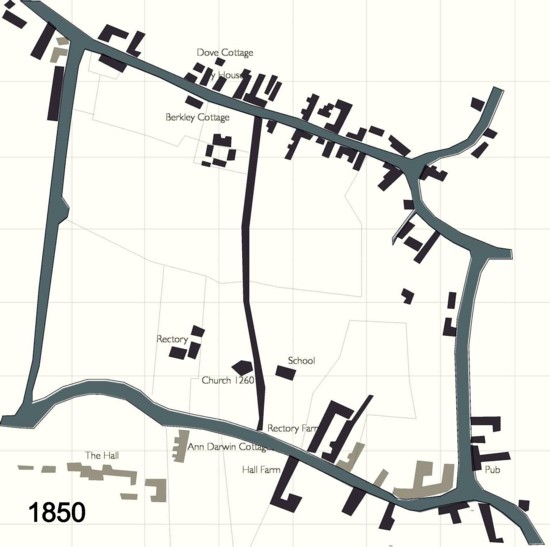
1855
Rectory (now The Old Rectory) built in Top Street
1856/61
Old Schoolhouse in Top Street built
1858
Map shows nine poor cottages at the end of Pinfold Lane onthe same side as the Horse and Gears (now Corner House)
1859
Repairs to the church, including rebuilding the north wall to nave and chancel
1868
Coach house and other outhouses added to the Old Rectory
1870s
First rectory in front of the churchyard demolished
1871
Methodist Hall inLow Street built
1872
Infant room added to the Old Schoolhouse
1872-5
Middleton House / Elston Towers built
Late 19th Century
Windmill in Elston Lane demolished
Pre-1914
Four cottages to the right of the track into Stokefields Farm demolished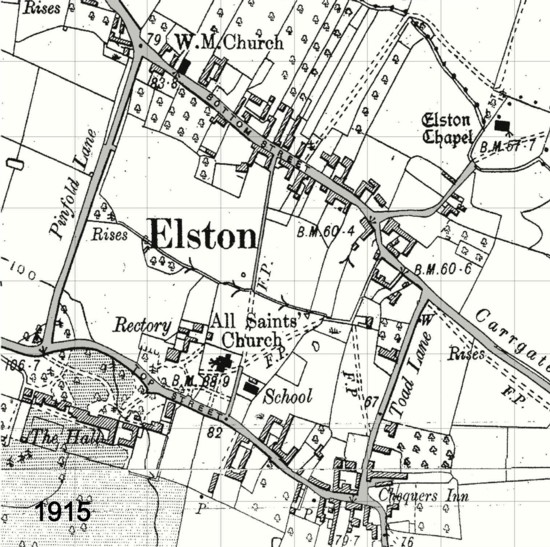
1920s
1 and 2 Stoke Field Cottages built
1940
Removal of sails from the windmill
Council houses at the bottom of Toad Lane built 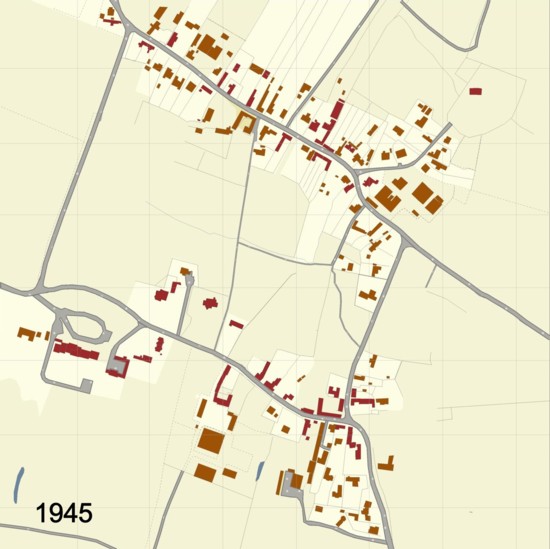
Post War
Oakwood Cottage ceases to be a shop and besomes a residence
1947/8
Central Drive built
1953/1960
Wooden fish shop stood where The Limes is now in Low Street
Mid 1950s
Cottages at the end of Pinfold Lane demolished
1955
Elston Hall becomes a Roman Catholic school
1959
Village Hall built
1960
Sunday school room, kitchen, and amenity rooms added to the back of the Methodist Hall in Low Street
Early 1960s
Demolition of Tudor Cottage in Mill Road
1960s
Wings added to Elston Hall to increase the size of the school
First Weslleyan chapel, a dwelling, demolished. Holydene built later
First extension to Cobwebs built
1962
Orchard View built in the Little Scutchel
1965
Quiet Corner built inthe Little Scutchel
1967/8
1-3 Pinfold Lane built
1967-1971
The Green built, starting at 22, moving down the left side, round the bottom and back up to finish at Rectory Farm
1968
23 The Green (fronting to Top Street) built
9,11, & 13 Pinfold Lane built
1969
The Pantiles built in Mill Road
1-13,2-8 The Spinney built
1970
7,9, & 11 The Spinney built
1970/71
Rest of Pinfold Lane (south end ) built
1971
1-5 Top Street built
Demolition of the Hall Farm Cottage adjoining Rectory Farm
1972
Rest of The Spinney built
1973
Pemberton built in the Little Scutchel
Demolition of Old Bakery in Old Chapel Lane
All Saints School built in the Village Hall Field
1974
Winston Drive built
1975
Darwin Close, 5 & 7 Carrgate Lane built
New Rectory built behind the old one
Three cottages on the south side of Top Street demolished
1976
Elston Hall converted to flats
1980s
Second extension to Cobwebs built
1981
Closure of Smith's shop in Low Street and first used as a dwelling
1982
The Paddocks built by Ablehomes
1987
Paddocks Close built by Langley Homes
1995-1998
The Orchard built
1999
Tudor Oaks built by Prowtings
Closure of the Post Office in Top Street and continued use as a residence
2005
"Shop in a Box" opened next to the Village Hall
2007
Conversion of Tudor Dovecote in Top Street
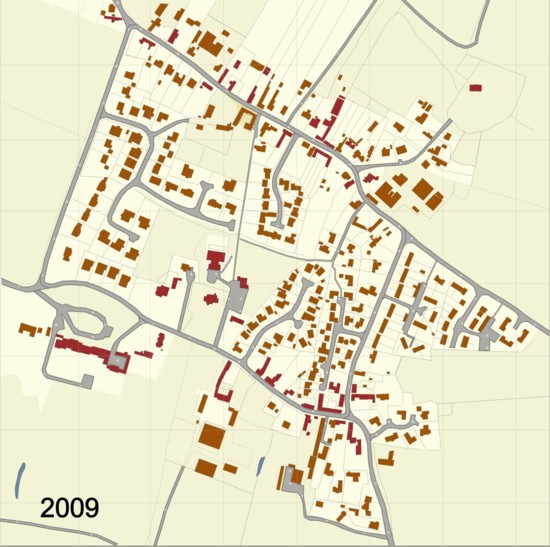
Listed Buildings
Elston Towers, Lodge Lane (Grade 2) 1872
Country house and terrace, built in 1872 for Robert Middleton. Built of yellow and red brick with some ashlar, stucco, terracotta and iron and with a slate roof.
Coach House at Elston Towers, Lodge Lane (Grade 2) Late C19
Coach house built of red and yellow brick comprising two storeys and four bays. To the right is a projecting four storey tower, formerly topped with a clock but now replaced with a 20th century stack (chimney)
The Hollies, Low Street (Grade 2) Early C19 (Georgian)
House with two and a half storeys. Built of red brick with some stone (ashlar) and roofed with concrete pantiles.
Ardmore House (formerly Smith's shop), Low Street (Grade 2) Early C17;Late 18C; C20
An early 17th century timber framed house with later 18th century red brick cladding. Formerly a house and shop. Roadside front has a single 20th century shop window above, to the right of which used to be a Cadbury's Cocoa sign. Attached to the right of the building is a red brick single storey and a four bay outbuilding now part converted for domestic use. The interior of the house has many beams and some evidence of posts.
The Windmill, Mill Road (Grade 2) Mid C19; C20
A mid 19th Century tower windmill, now converted to a house. The building is built of red brick, painted and comprises five storeys. Attached to the west are 20th century extensions of no special interest.
Elston Chapel, Old Chapel Lane (Grade 1) C12; C14; C16
Former parish church, now vested in the redundant churches fund. Dates to 12th, 14th and 16th centuries. Built of coursed rubble with some ashlar (stone) and plain tiled roofs.
Church of All Saints, Top Street (Grade 2) C13; C14; 1837; 1856
Parish church dates to 13th and 14th centuries but extensively restored in 1837 (chancel) and 1856 (vestry). The slim tower is 13th century and the clerestory is 14th century. Many 19th century arched windows. The interior has a restored 14th century font. Monuments inside to many members of the Darwin family dating from 1682 to 1838.
Elston Hall, Top Street (Grade 2) 1756; 1837; later C19; 1950
Country house (now 10 maisonettes) dated to 1756 with garden front dated to 1837. Later 19th century and circa 1950 extensions. The house is the birthplace of Erasmus Darwin (1731-1802). Originally laid out on an H plan with 2 storeys and attic and 9 bays. Built of blue lias with ashlar dressings, rendered red brick and plain tiled roof. Late 19th century and several 20th century wings added. Interior contains several panelled walls and ceilings, moulded and carved fireplaces and a dogleg staircase with machine turned balusters.
Hall Farm House, Top street (grade 2) late C18
Farmhouse, built of redbrick, rendered and a pantile roof. The building has two storeys plus a garret (loft). To the left is a red brick lean-to and to the rear is a long lower wing at right angles.
The Old Ale House, Top Street (Grade 2) late C18; C20
Public house, now a domestic dwelling. Built of painted red brick set on a rubble plinth with a pantile roof. All windows are 20th century.
